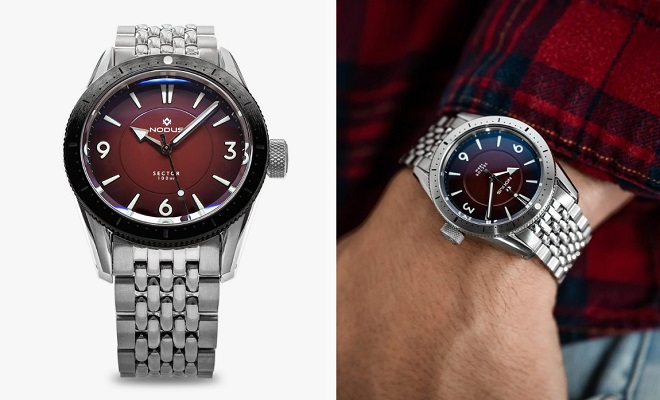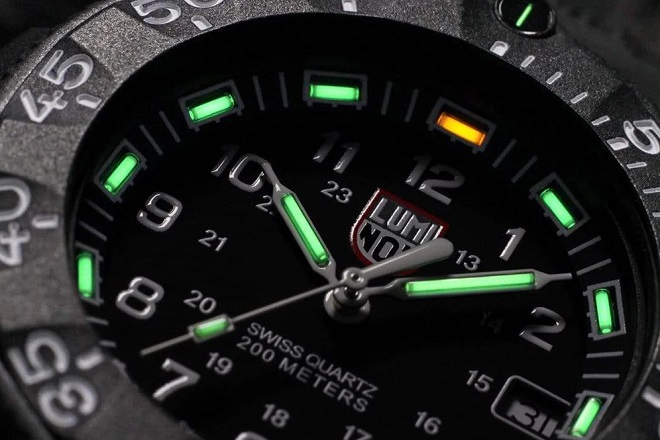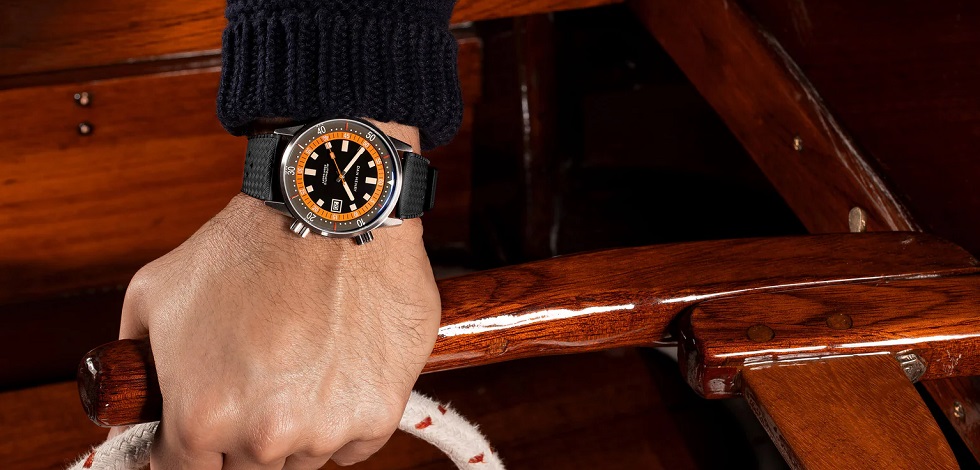12 Best Dive Watches Under $500
In the hunt for the best dive watches under $500? Well, savvy horologists know that style and performance don’t have to come with a hefty price tag. These coveted timepieces, originally crafted for explorers braving demanding environments, are engineered for both elegance and endurance.
But we should mention: dive watches can become a passion, and upgrading your collection might seem like an expensive endeavor, but fear not. Quality and affordability can go hand in hand. Let’s explore some top contenders in the world of dive watches under $500 and provide you with essential tips for selecting your perfect underwater wrist companion.
Top Picks
Casio Duro MDV106-1A (US$69.95)

Never mind $500; if you want to score excellent value for money, Casio delivers for less than a Benjamin. The MDV106-1A features a stylish black and silver stainless steel face, paired with a resin watch strap. Offering water resistance up to 200 meters and a battery life of around three years, this is a great budget-friendly option if you’re ready to dip a toe in the dive watch scene.
Orient Kamasu II (US$255)

Quality Japanese watchmaker Orient offers a classic but still affordable dive watch option with the Kamasu II. The watch has an automatic Orient F6922 caliber, a stainless steel case and bracelet, and luminous hands and indices for visibility in low-light conditions. Water-resistant up to 200 meters, it’s a handsome choice for everyday wear.
Dan Henry 1970 Automatic Diver 44mm Date (US$310)

The Dan Henry 1970 Automatic Diver 44mm Date offers a great blend of unique style and utility, featuring a 60-minute inner rotating bezel, a sapphire crystal with an anti-reflective treatment, and an automatic Seiko NH35 movement that prevents the need for winding if the watch is worn daily. Dual crowns adjust the time and the inner bezel, while LumiNova® lume provides low-light visibility. Water-resistant to 200 meters, the watch comes in a variety of colorway options with a Scaphtopus 3D medal on the caseback for added character.
Tissot Seastar 1000 Chronograph (US$390)

Swiss watch brand Tissot presents the Seastar 1000 Chronograph, an everyday diver that seamlessly transitions from boardroom elegance to underwater prowess. This standout piece, showcasing a chic blue dial paired with a durable rubber strap, is just one of many customizable options, allowing you to curate a watch that mirrors your personal style. The Seastar 1000 blends contemporary, sporty allure with practical features: a unidirectional rotating bezel, a scratch-resistant sapphire crystal with anti-reflective coating, a date display, luminous accents on the dial and hands, and three sub-dials tracking 1/10th of a second, 60 seconds, and 30 minutes. Powered by the ETA G10.212 caliber quartz movement and boasting a water resistance of up to 300 meters, this watch isn’t just about looks — it’s a testament to precision and resilience.
Seiko Prospex SRPE99 PADI Edition (US$413)

This special-edition Seiko Prospex nods to Seiko’s partnership with the Professional Association of Diving Instructors (PADI), taking inspiration from PADI’s signature colors with the blue and red unidirectional rotating bezel and blue dial. LumiBrite hands and markers provide low-light visibility, while additional features include a day and date display, 200-meter water resistance, and both manual and automatic winding capabilities, with a 4R36 movement and a power reserve of around 41 hours when fully wound.
Tissot Seastar 1000 36mm (US$425)

The Tissot Seastar 1000 36mm is the epitome of sophisticated performance, effortlessly blending urban chic with aquatic resilience. Its 36mm diameter ensures all-day comfort while maintaining clear legibility. This watch, with its refined city-ready aesthetics, is equally at home exploring the depths thanks to its impressive 300 meters of water resistance and a robust sapphire crystal that is both anti-reflective and scratch-resistant. Encased in stainless steel, it features a versatile bracelet that’s easily swapped for a sleek silicone strap when adventure calls. Beneath its stylish exterior beats a Swiss quartz movement, complemented by Super-LumiNova accents on the hands and dial for enhanced visibility, along with a practical date display. The Seastar 1000 36mm is more than just a timepiece—it’s a statement of style and functionality.
RZE Endeavour (from US$459)

The Endeavour from Singapore-based brand RZE offers handsome aesthetics with practical diver capabilities. It features a titanium case and caseback with a VITON® gasket, providing 200 meters of water resistance. The watch comes in a variety of attractive colorway options and has a rubber HexaFlex strap as the most affordable option, though it can also be paired with an optional titanium bracelet (note, this bumps it over the $500 mark). Super-LumiNova dial details, an anti-reflective sapphire crystal, and an NH38A automatic movement round out the features.
Nodus Sector Dive (US$475 to $500)

The Nodus Sector Dive is a twist on the skin diver (a watch designed to be worn while diving without breathing equipment), combining modern style and craftsmanship with classic features such as a smaller diameter, shallower water resistance, and Arabic numerals. Made in Los Angeles, the watch has a 100-meter water resistance, stainless steel case, and sapphire crystal with an anti-reflective coating. The 120-click uni-directional bezel comes in either a black DLC or steel finish, while the dial features Super-LumiNova detailing. It uses a Seiko TMI NH38 movement with a 41-hour power reserve.
Luminox Original Navy SEAL (US$495)

If a dive watch is good enough for the Navy SEALs, it’s a solid contender for any adventurer in our books. Enter the Original Navy SEAL, first released in 1994 and specifically developed by Luminox for the Navy SEALs. Luminox Light Technology makes the dial and bezel numbers highly legible in the dark, while the CARBONOX case offers an excellent balance of durability and light weight. The Swiss-made watch is water resistant to 200 meters and includes a date display and rubber strap.
MINUS-8 Diver 2.0 Model R (US$498)

If you’re a member of the #AllTitaniumEverything club, California-based watch brand MINUS-8 has the ideal timepiece for your setup. The Diver 2.0 Model R features a titanium case and bracelet, delivering lightweight toughness with 300-meter water resistance. Low-light visibility is provided through Super-LumiNova on the hands and markings, with additional features including a sapphire crystal with an anti-reflective coating, a rotating bezel, and a helium release valve. The watch uses a dependable Seiko NH35 automatic movement and can be paired with an optional rubber strap if desired.
Lorier Neptune SIV (US$499)

Lorier’s flagship diver gets a refined update with Series IV, offering enhanced usability through user feedback from previous generations. New updates include a luminous acrylic bezel insert, shortened lugs, and repositioned lug holes. Additionally, the bracelet links are thinner and the watch offers more distinct hands. The watch features a Miyota 90S5 automatic movement, a Hesalite dome, luminous detailing, and a stainless steel case and movement. Water resistant to 200 meters, the watch comes in date and no-date options and includes a screwdriver for adjusting the bracelet, a travel pouch, and a Polywatch tube with a polishing cloth for easily buffing out crystal scratches.
Scurfa Diver One Stainless Steel

The Scurfa Diver One offers an impressive fusion of dive-ready performance and city-ready style, with a wide range of colorway options ensuring you can find one that’s just right for your tastes. The watch combines a stainless steel case with a 120-click unidirectional bezel and a sapphire crystal featuring an anti-reflective coating. It uses an ETA F06.402 brass three-jewel Swiss movement and provides a 500-meter water resistance. The watch also includes a Heliox escape valve, a rubber strap, and Super-LumiNova detailing for easy legibility. It’s worth noting the Diver One tends to sell out quickly, so you may need to wait a while and be quick off the mark when in stock to score one.
What To Consider
Technical Specifications
Each dive watch has technical specifications that provide insight into how it’s made and how it will perform. Look over these to ensure the watch meets your specific needs. For instance, for most users a water resistance of 200 meters is likely sufficient, accommodating boat trips, recreational diving, and swims in the pool. For more demanding environments, you may require increased water resistance. Features such as a unidirectional rotating bezel and highly legible markings are also important for accurately tracking dive time.
Adventure-Ready Durability
Dive watches are intended for demanding underwater exploration, so suitable construction materials are key. Case materials such as stainless steel or titanium are durable and corrosion-resistant, while sapphire crystal or high-quality mineral glass helps protect against scratches. Strap materials are also worth considering, with options such as stainless steel or tough rubber providing durability while remaining comfortable to wear for extended periods.

Watch Movements
Automatic (self-winding or mechanical) movements offer an enticing blend of mechanical craftsmanship and tradition, while quartz movements offer more precise timekeeping and require low maintenance. Quartz movements are highly accurate, so a watch may only be off by a few seconds each year. With an automatic movement, a watch may be off by a few seconds each day. While both offer reliable timekeeping, if high precision is a priority then quartz may be the best option for your needs.

Automatic movements use the movement of your wrist to keep the watch wound and ticking. This means automatic watches should be worn or manually wound each day to function properly, though some have power reserves spanning one to two days to fall back on. Automatic movements are also usually heavier than quartz movements.
Quartz movements require a battery and are generally cheaper to manufacture than automatic movements since they’re less complex, often resulting in more affordable watches. The battery also provides a power reserve of several years, regardless of whether the watch is worn. However, watch enthusiasts tend to place a lot of value on the detailed craftsmanship required to create automatic movements, making automatic watches covetable pieces for many watch collectors. Ultimately the movement you choose will be influenced by your preference for refined traditional craftsmanship or convenient accuracy.

Low-Light Visibility
By their nature dive watches are designed for use in darker, underwater environments. So clear legibility is vital in such settings. Look for features such as large and luminescent hands and markers using materials such as Super-LumiNova or tritium for visibility in low-light conditions. This helps keep you safe underwater and, of course, works equally well in dark settings on land.

Brand Reputation
With so many watch brands to choose from, research which ones have an established reputation for creating quality dive watches. Established brands often maintain strict quality standards, delivering dependable performance, construction, and warranties so users can feel confident using their timepieces. Brand history, customer reviews, and industry awards can provide valuable insight into a brand’s reputation and commitment to creating quality pieces, especially on the more budget-friendly end of their offerings.
Versatile Sea-to-Shore Style
Dive watches are necessarily practical but that doesn’t mean aesthetics need to be neglected. The dive watch has transcended its utilitarian nature to become an iconic style statement in its own right. So while the piece you choose should be practical, don’t overlook aesthetics. Choose a design that moves smoothly from underwater adventures to everyday wear. A versatile style ensures you can get the most out of your dive watch, showcasing personal tastes and saluting your adventurous spirit while benefiting from practical features and long-lasting durability at work, on your travels, and beyond.





 Carry Awards
Carry Awards Insights
Insights Liking
Liking Projects
Projects Interviews
Interviews











